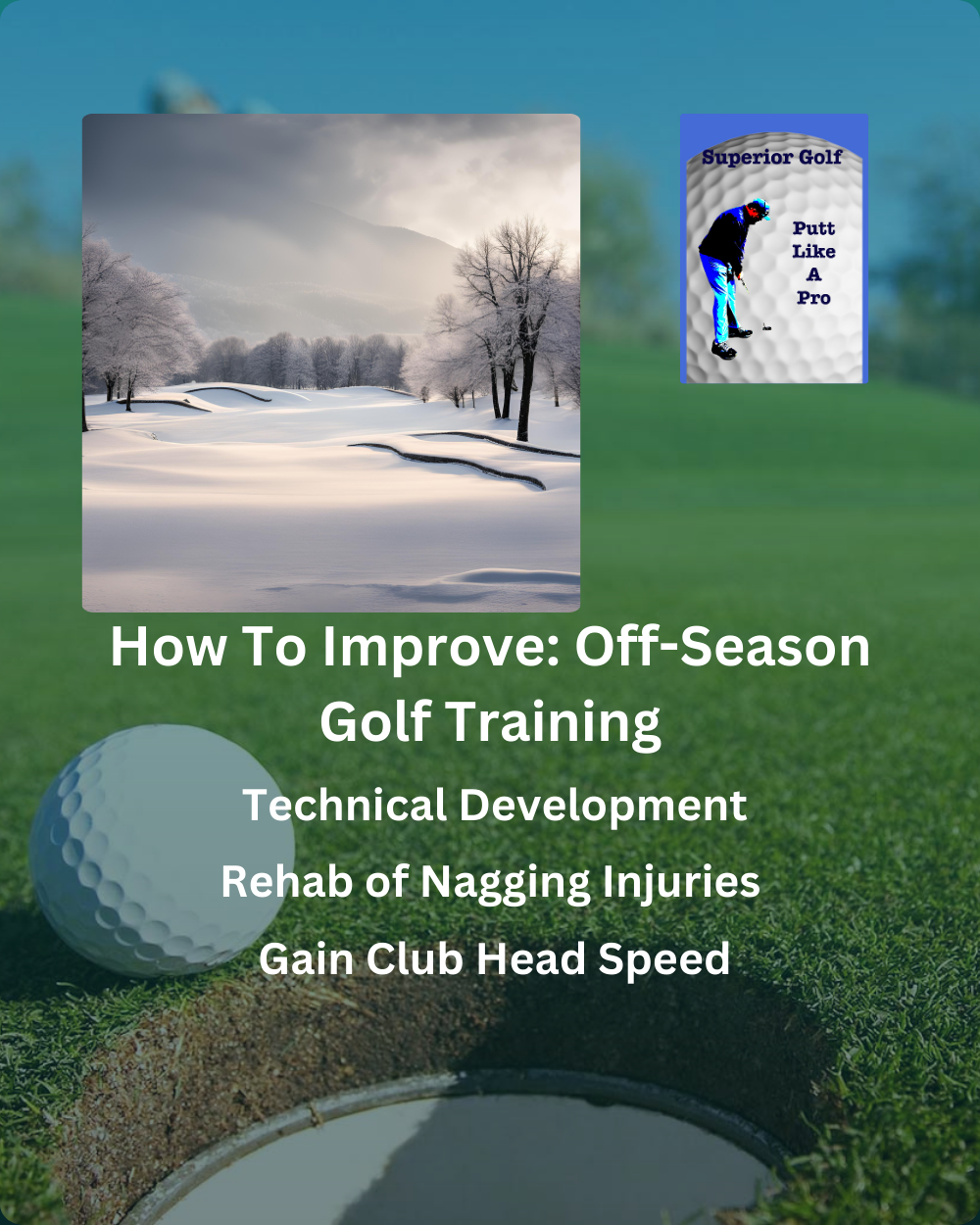Off-Season Golf Training: The off-season can feel like a wait for golf lovers. But, this time is a great chance to boost your game. You can work on your golf fitness and fine-tune your skills at home, away from the course. Even without your clubs, home golf exercises and training can really improve your gameplay during the cold months.
One winter, I made a mini putting green in my living room. This helped me work on my posture and swing. Using video coaching from pros on apps like Skillest and tools like GolfMetrics made a big difference. They let me see parts of my game I needed to fix with special drills at home.
The quest for better golf doesn’t pause in the cold. Off-season training with new tools and expert advice can prepare you well. This time allows you to increase your swing speed, get better at putting, and handle any persisting injuries. It’s an ideal moment for a thorough improvement and recovery.
Key Takeaways
- Leverage the off-season to refine your golf fitness regimen with home golf exercises and focused training routines.
- Video coaching and tracking your Strokes Gained stats can help identify and address your specific improvement areas.
- Tools like GolfMetrics provide valuable insights, enabling you to adjust your training techniques accordingly.
- Engage with professional advice through apps like Skillest to gain tailored training plans and video feedback.
- Emphasize technical development while managing and rehabilitating any lingering injuries to ensure a strong comeback.
- Focus on improving your posture and swing mechanics, even during home practice sessions, for consistent progress.
Key Areas to Focus During Off-Season Golf Training
The off-season is the best time to boost your golf skills. It’s when you can work on your skills, get stronger, and make sure you’re ready for next season.
Technical Development
Improving your golf technical skills is essential in the off-season. You can practice your swings, short game, and putting at home or a practice spot. Using apps to track your progress helps you know what to work on4. Try using GolfMetrics or ShotScope to get better4.
Rehabilitation of Nagging Injuries
Fixing lasting injuries is key to playing your best. For golfers, rehab might include strengthening exercises to fix weak spots. Be careful with exercises that involve spinning, like in golf swings, to avoid more injuries5. Experts like physiotherapists can make a recovery plan just for you.
Improve Body Composition
Working on your fitness is important during the off-season too. A method called linear block periodization is often used to build strength gradually5. You might start with exercises that involve 8 to 10 reps and move to tougher ones5.
Gain Club Head Speed
Boosting your club head speed can help increase your drive distance. Speed training for golf usually has a phase for power and speed, lasting about 4-6 weeks, with specific exercises5. This follows an initial phase of strength training5.
Aerobic Training & General Health
Keeping up your overall health is also crucial. Adding aerobic exercises like running, biking, or swimming can boost your heart health. This prepares your body to handle long games and tournaments well.
| Training Focus | Details |
|---|---|
| Technical Development | Tackling full swings, short game, and putting using tracking apps4. |
| Rehabilitation | Targeted injury rehab for golfers focusing on rotational movements5. |
| Body Composition | Utilizing linear block periodization techniques5. |
| Club Head Speed | Power and acceleration training, 4-6 weeks phase, focusing on speed5. |
| Aerobic Capacity | Regular cardiovascular exercise like jogging or cycling. |
Effective Off-Season Golf Exercises
To enhance your golf game, focus on specific workout areas during the off-season. A diverse set of exercises will give you a well-rounded training experience.
Resistance Training
Adding golf resistance workouts can greatly improve your muscle health and body structure. These exercises are key to increasing muscle strength and refining body composition. This impacts your swing’s power and efficiency1. A solid resistance training program can boost your muscles and golf performance. It does so by improving speed and distance with the club head.
Putting Indoors
Enhancing your putting skills is easy with indoor putting techniques. Staying committed to practicing for 15 minutes every other day is beneficial6. Constant practice helps in correcting swing faults and ensures regular improvements6.
Swing a Lightweight Club
Using a lightweight club training method helps in achieving faster rotation speeds and better clubhead speed. Swinging a lightweight club three times per week can elevate your game6. This approach also aids in body stabilization and strength enhancement.
Improving Strength and Flexibility
Working on your golf strength and flexibility is crucial for a better swing. Just 10 minutes of targeted exercises three times a week can lead to noticeable improvements6. Focus on exercises for your abs, triceps, forearms, legs, and hips. These are vital for boosting your physical capabilities during the off-season6.
Check out more tips on off-season training for golf and detailed winter golf training methods.
Conclusion
The off-season is more than just a break from golf. It’s a key time to improve your game. Indoor training is perfect when the weather is bad, allowing you to practice without worrying about the rain or cold7. To make the most of your off-season, keep training indoors to keep your muscle memory sharp7.
Indoor facilities have tools like video analysis and simulators. These help you see and fix your swing and posture7. A fitness plan during this time will boost your game. It helps with your strength, balance, and overall stamina78.
It’s also a time to toughen up mentally. Practice games indoors to improve your focus and toughness7. Set goals like hitting further or reducing your handicap to keep motivated78. Use this period wisely to grow and get ready for the next season8.
Try doing exercises like resistance training and indoor putting. These not only sharpen your skills but also prep you physically for what’s next7. For more tips, check out The Benefits of Indoor Golf Training During Off-Season and What You Need To Do This Off-Season To See Results Next Golf Season. A well-planned off-season is crucial for improving and performing better.
FAQ
How can I improve my off-season golf training?
What are the key areas to focus on during off-season golf training?
How can technical development improve my golf game during the off-season?
Why is resistance training beneficial for golfers in the off-season?
How can I rehabilitate nagging injuries during the off-season?
What are some effective off-season golf exercises?
How can I improve aerobic capacity and general health during the off-season?
Q: How does swinging a lightweight club help during the off-season?
Q: What should I consider when focusing on improving strength and flexibility for golf?
Source Links
- https://fitforgolf.blog/2022/11/28/off-season-training-for-golf/
- https://golf.com/instruction/10-ways-improve-golf-game-home-off-season/
- https://www.golfcanada.ca/articles/12-tips-finally-take-offseason-golf-practice-next-level/
- https://www.lowermyhandicap.net/post/off-season-golf-training-plan
- https://www.mytpi.com/articles/fitness/a_practical_guide_to_off-season_periodization_for_golf_fitness
- https://www.scottishhighlandsgolf.com/files/pdf/5012008Winter_Golf_Training.pdf
- https://www.mychronicgolf.com/blog-posts/the-benefits-of-indoor-golf-training-during-off-season
- https://centrallinksgolf.org/what-you-need-to-do-this-off-season-to-see-results-next-golf-season/

